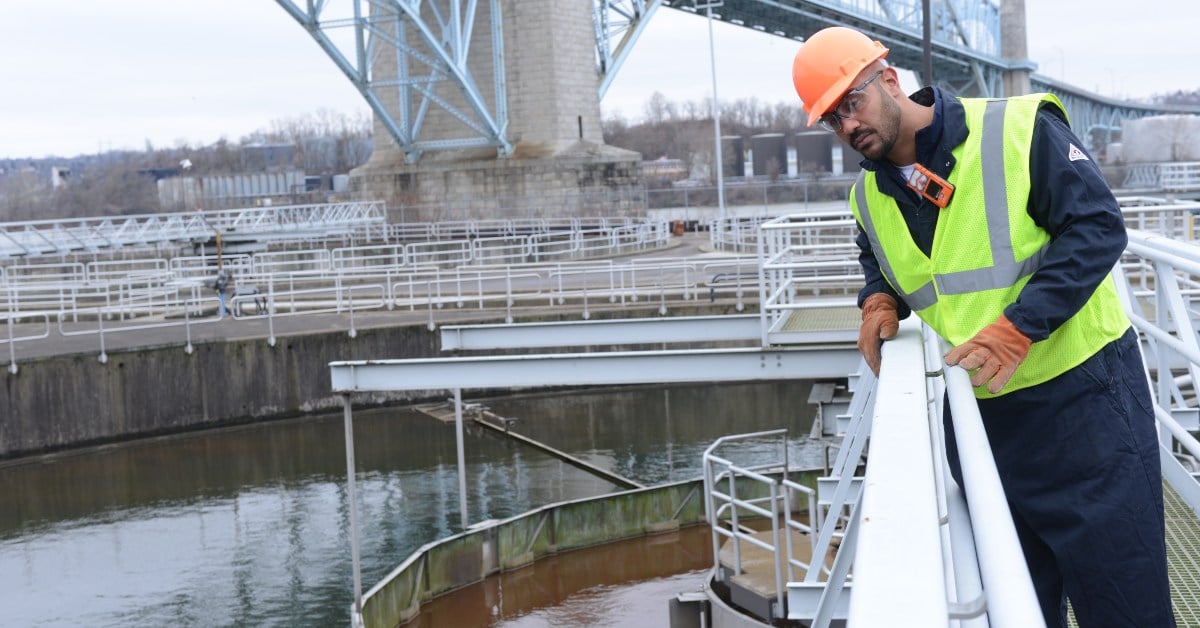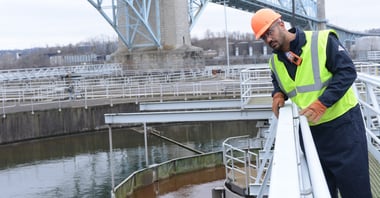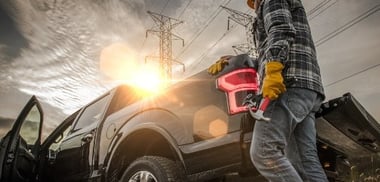Getting clean water into millions of taps is no easy task. And for the lone workers at water companies who make this happen, it can be dangerous. Lone workers are common in the water and wastewater treatment industry—they may be in the field checking meters, monitoring water quality at a pump station or reservoir, or even working alone at the remote end of a large facility. The nature of water and wastewater treatment means that these lone workers also risk exposure to gas hazards that are undetectable without special equipment.
When these lone workers encounter a threat—whether a gas hazard, slip and fall, dangerous weather, or a medical emergency—they can’t rely on peers nearby to help. Because of this, lone workers in this industry need to take additional safety precautions compared to their on-site peers.
With the double threat of dangerous gases and working alone, you need a plan for how to identify hazards and protect your lone workers in the field.
Read on for our top tips on what gas hazards your lone workers need to watch for, and how you can give them additional protection.
Gas Hazards Your Lone Workers Face
The specific gas hazards your lone workers face depends on the task they’re performing. While gas hazards can vary, there are some common themes:
- Water, Storm, or Wastewater Collection: Lone workers in water, storm, or wastewater collection may work near wells, manholes, sumps, dams, reservoirs and collection tanks that could expose them to oxygen enrichment/deficiency, combustible gases, hydrogen sulfide, and carbon monoxide. Flooding can introduce new, often combustible, hazards into otherwise safe locations.
- Water Transmission and Distribution: Transmission and distribution workers are often alone in the field, inspecting or performing maintenance on pipelines or trenches. These tasks make it more likely that they could face oxygen enrichment/deficiency, combustible gases, hydrogen sulfide, carbon monoxide, and chlorine gas.
- Water, Storm, or Wastewater Collection: Lone workers in water, storm, or wastewater collection may work near wells, manholes, sumps, dams, reservoirs and collection tanks that could expose them to hydrogen sulfide, combustible gases and even an oxygen deficient atmosphere. Flooding can introduce new combustible or toxic hazards from chemicals that may leak into or be spilled into otherwise safe locations.
- Confined Spaces: Teams of mobile workers may need to enter confined spaces off site for various reasons. Confined spaces could expose them to oxygen deficiency/enrichment, combustible gases, or toxic gases like hydrogen sulfide, sulfur dioxide, carbon monoxide, and ammonia. If entering confined spaces, these workers will need some additional equipment and training to stay safe.
Why Lone Workers in Water and Wastewater Need Connected Multi-Gas Detectors
Workers in water or wastewater collection, transmission and distribution, and treatment will likely face multiple gas hazards at once. At the same time, these gas hazards could put them at greater risk than their peers because they’re working in more isolated areas. For the best protection, these lone workers need personal multi-gas detectors that connect them to safety contacts in real time.

Personal multi-gas detectors will detect hazards and alert the workers, so they have time to evacuate safely, while real-time connectivity gives safety managers visibility into the conditions the workers face. This allows for faster, more accurate emergency response when workers need help.
Connectivity in a lone worker’s multi-gas detector can also eliminate the need for manual check ins, improving their safety and productivity. A lot can happen in the minutes or hours between check ins—lone workers could be overcome by a gas hazard, suffer a medical emergency, or just lose track of time. With automatic status updates through a gas monitor as often as every 60 seconds, safety contacts never need to guess what happened to a worker, and workers in the field can focus on the job at hand.
Choosing the Right Lone Worker Monitoring System
Lone workers need specialized connectivity in their gas detectors—even with cell phones around—because their work often takes place beyond the boundaries of cell coverage. It’s common for lone workers to be in a remote area without cell phone service, rendering useless phone calls or other smartphone apps designed for lone worker protection.
A vehicle-mounted device, like the TGX® Gateway, can solve this challenge by offering cellular connectivity with automatic failover to satellite. This ensures that workers stay connected with on-site safety contacts, in even the most remote locations.
On the other hand, on-site workers in isolated areas can reap these same benefits by using a multi-gas detector with built-in cellular or wif-fi connectivity, depending on your site’s characteristics.
Looking out for the safety and well-being of your water and wastewater treatment workers is a huge responsibility, but it’s one you don’t have to shoulder alone. If you choose your gas detectors and lone worker monitoring system carefully, you can breathe easily knowing you have complete visibility into what your workers are experiencing, even when they’re miles away.
Need help choosing the right gas detection equipment for your water or wastewater facility? Talk to one of our experts.



